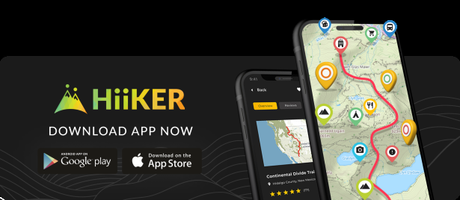So you’ve decided to go for a hike? You’ve done a short walk in the mountains and you’ve been left yearning for more! You search for the perfect hike to scratch that itch and you make a plan. The big question that remains is – What do I pack for a day hike?
Well, HiiKER was founded by a bunch of hiking enthusiasts. We’ve made the big mistakes when it comes to packing. Even reading this article there will likely be one thing you forgot, or brought too much of! But this article should help you cover the basics to ensure a safe and enjoyable hike.
Each trail will have its own requirements. But tick these following items off you’re list and you’re in for a good day hike.
Backpack
First and foremost, you’ll need a comfortable backpack. Any good quality backpack will do. You don’t need to go investing in the lightest, most technical backpack for your first day hike. Simply something that fits well and doesn’t hurt your shoulders while you’re carrying the rest of your things.
Ideally, you would have something that can carry food, water and any additional clothing (rainwear, extra warm layer).
Hiking Clothing
Cotton is the enemy of the hiker. Hiking is considered a strenuous activity. You’re going to work up a sweat! Even in the winter months, you’re going to be heating up and generating sweat. So be sure to wear more synthetic clothing, like exercise gear you would buy in any sports store.
Always pack a rain jacket! Even in summer months, the weather in the mountains can be very changeable. While a bit of rain never hurt anyone, it will definitely hurt when you’ve got more than an hour left in your hike and it’s getting cold!
It is also wise (even in summer) to pack an additional warm layer, such as a fleece or down jacket. You should also pack a wooly hat in case it gets very cold.
Hiking Boots or Trail Runners
Trail runners are all the rage these days and there’s good reason for it! Most hiking trails will suit a pair of trail runners. They’re light, sturdy and in most cases, waterproof. Especially in your early days of hiking, trail runners will do just fine. You also don’t need to go to a huge expense on them. We would advise against using regular trainers for hiking as they are not designed for the more rugged terrain you’ll be walking on.
Hiking boots are for the trails and routes that require a bit more ankle support. You should consider investing in good hiking boots if you intend on more steep or technical trails.
Remember: Most rescue service callouts are due to a lower leg injury. Having the correct footwear can be the difference between a great hike or a really bad one!
Navigation
At HiiKER we truly believe that we should all become better navigators. While HiiKER is a fantastic resource for trails which you can navigate for free offline, true safety comes from being able to read a map and get to know the land around you. There are plenty of introductory navigation and map reading courses you can do. Even some useful Youtube videos! We’ve even written a blog about maps and navigation that could help you on your journey!

Of course, don’t forget to download your trail map from HiiKER before you set off. Our app allows you to access a wide range of trails offline, meaning you won’t have to worry about losing signal mid-hike.
Food and Water
Some might say that food is the real reason we hike. Certainly a common thread amongst the HiiKER team! But we’re not talking about a five-course meal. You should pack enough snacks to keep you fueled for your day on the trail. Always pack more than you think. That might mean an extra banana or energy bar. Sugar is also a great addition to any hiking trip. Just make sure you’re NOT ONLY bringing M&Ms. Nuts, fruit, energy bars, packed sandwich/wrap would be our recommendation. Save the pizza for later!
Even more important than M&Ms is water. You should pack about 1 liter for every 2 hours of hiking. Some trails will take much longer than this, so it is worth investing in a water filter which you can filter fresh water directly from a lake or stream along the trail. Some trails also feature water taps along them (particularly if they cross through populated areas, such as towns or villages). As mentioned before, hiking is a strenuous activity and you’ll work up a sweat. Sweating reduces the amount of water in our body, so we need to replenish it with regular sips of water.
Basic First Aid
Accidents can happen. A basic first aid kit with bandages, antiseptic wipes, tweezers, and painkillers can be a lifesaver. You shouldn’t need to invest in a kit bag or anything fancy! Simply grab some things that you have at home for your day-to-day booboos and you should be all-set.
Any other more serious incidents should involve mountain rescue or local emergency services. Make sure you know who to call in the case of these incidents.
Sun protection
Even on an overcast day, long exposure to indirect sunlight can damage/burn your skin. It is always recommended to wear suncream on your face, neck and anywhere else that is exposed to sunlight.
If you keep the above basics in mind when packing for any hike, you will be in for a great hike. Don’t stress about the big fancy gear yet. The most important thing to be safe, comfortable so that you can enjoy your hike.
